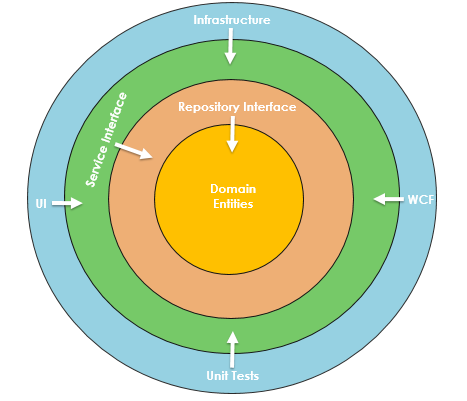Onion Architecture is based on the inversion of control principle. Onion
Architecture is comprised of multiple concentric layers interfacing
each other towards the core that represents the domain.
Onion Architecture solved these problem by defining layers from the core to the Infrastructure. It applies the fundamental rule by moving all coupling towards the center. This architecture is undoubtedly biased toward object-oriented programming, and it puts objects before all others. At the center of Onion Architecture is the domain model, which represents the business and behavior objects. Around the domain layer are other layers, with more behaviors.
Domain Layer
At the center part of the Onion Architecture, the domain layer exists; this layer represents the business and behavior objects. The idea is to have all of your domain objects at this core. It holds all application domain objects. Besides the domain objects, you also could have domain interfaces. These domain entities don’t have any dependencies. Domain objects are also flat as they should be, without any heavy code or dependencies.
Repository Layer
This layer creates an abstraction between the domain entities and business logic of an application. In this layer, we typically add interfaces that provide object saving and retrieving behavior typically by involving a database. This layer consists of the data access pattern, which is a more loosely coupled approach to data access.
Services Layer
The Service layer holds interfaces with common operations, such as Add, Save, Edit, and Delete. The Service layer also could hold business logic for an entity. In this layer, service interfaces are kept separate from its implementation, keeping loose coupling and separation of concerns in mind.
UI Layer
It’s the outer-most layer, and keeps peripheral concerns like UI and tests. For a Web application, it represents the Web API or Unit Test project. This layer has an implementation of the dependency injection principle so that the application builds a loosely coupled structure and can communicate to the internal layer via interfaces.
source: https://www.codeguru.com/csharp/understanding-onion-architecture/
More: https://jeffreypalermo.com/tag/onion-architecture/

No comments:
Post a Comment